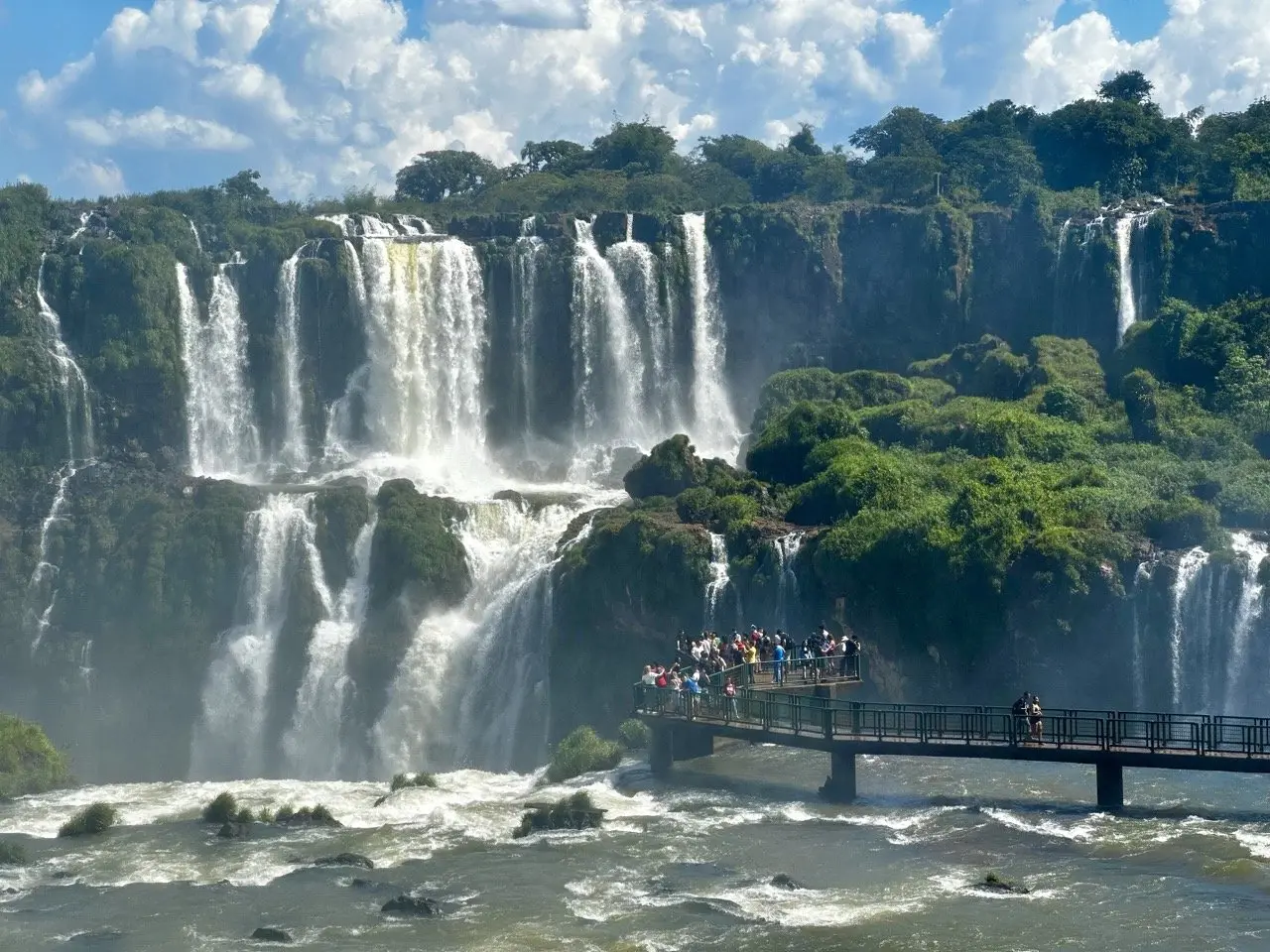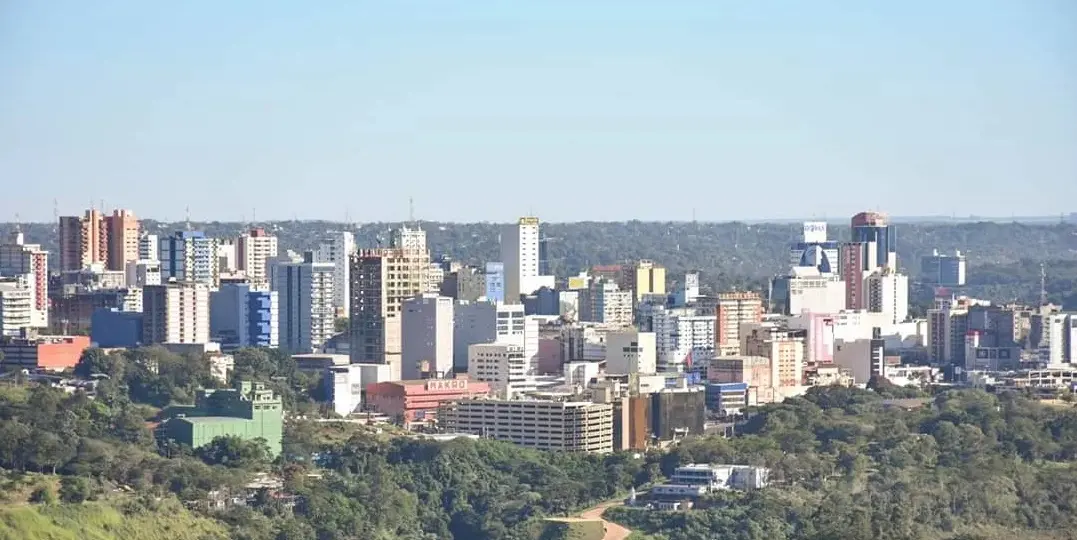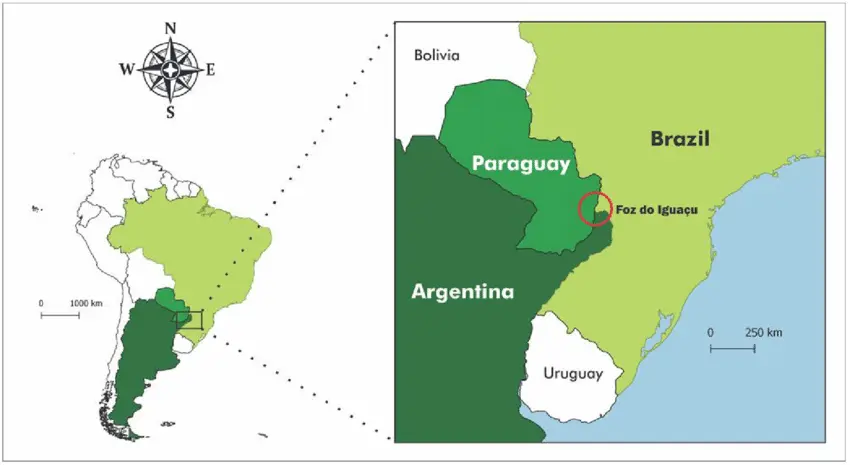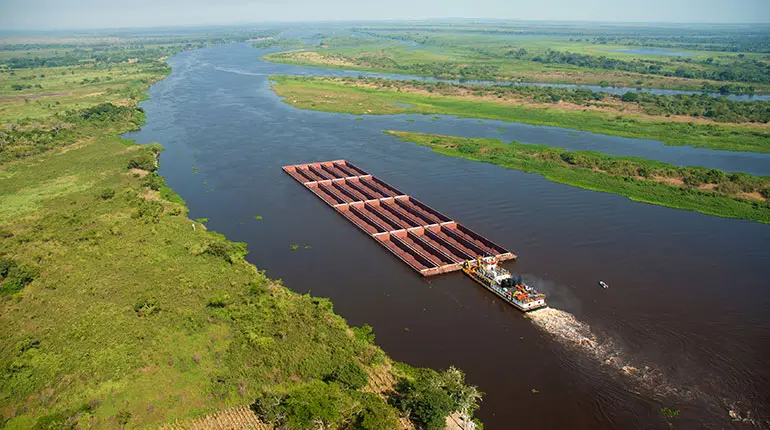Embarking on day trips from Buenos Aires to Iguazu Falls promises an adventure that transcends the ordinary, whisking travelers away from the cosmopolitan streets of Argentina’s capital to the raw, pulsating heart of nature’s own masterpiece. This journey, a stark contrast of experiences, offers an immersive dive into the essence of South America’s geographical and cultural diversity. Iguazu Falls, a marvel straddling the borders of Argentina and Brazil, serves not just as a testament to nature’s prowess but as a gateway to exploring the vibrant mosaic of nearby cities, each with its own unique charm and story.
As we plot this journey, it’s essential to weave through the practicalities and the poetic, the majestic allure of the falls themselves and the rich tapestry of experiences lying in wait in the surrounding locales. This guide aims not just to navigate you through the logistics of making such a trip feasible but to invite you into a narrative where each moment is laden with potential for discovery and awe.
Day Trips From Buenos Aires to Iguazu Falls: Where To Start
The Allure of Iguazu
First, understand the scale of what awaits. The falls are not a singular spectacle but a colossal ensemble of over 275 cascades, set amidst a lush, throbbing ecosystem that’s alive with the calls of exotic wildlife. This natural wonder isn’t just to be seen but experienced, with the mist from the thundering falls coating your skin and the panoramic views etching themselves into your memory. The experience of standing on the precipice, where water and sky seem to merge, is humbling, a moment of raw connection with the forces of nature.
The transition from the urban elegance of Buenos Aires, with its European-inspired architecture and bustling café culture, to the untamed beauty of Iguazu, offers a narrative of contrast that’s rich in experiences. Buenos Aires serves as the perfect launchpad for this journey, a city that marries the old and the new, the tranquil and the animated, offering travelers a taste of Argentine culture, cuisine, and history before they embark on their natural adventure.

Beyond the Falls: A Cultural Exploration
But the journey doesn’t end at the water’s edge. The regions surrounding Iguazu Falls are brimming with opportunities for cultural immersion and exploration. From the quaint charm of Puerto Iguazú, with its inviting eateries and artisan markets, to the vibrant streets of Foz do Iguaçu in Brazil, where the cultural blend is as palpable in the air as it is in the cuisine, there’s a world to explore. Each city in the tri-border area offers a unique vantage point not just on the falls but on the confluence of cultures, histories, and landscapes that make this region truly extraordinary.
As we delve into this guide, let’s embrace the journey with an open heart, ready to be transformed by the power of Iguazu Falls and the rich cultural tapestry of the lands that lie beyond. This is not just a trip from Buenos Aires to Iguazu; it’s an invitation to journey through layers of nature and culture, each more enriching than the last.
Exploring Beyond the Falls: Nearby Cities and Attractions
At the northeastern tip of Argentina, a stone’s throw away from the magnificent Iguazu Falls lies the quaint town of Puerto Iguazú. This charming gateway to one of the world’s most awe-inspiring natural wonders serves not only as a base for those venturing to the falls but as a destination rich with its own unique allure. With the Iguazu River winding its way around, Puerto Iguazú offers more than just a picturesque setting; it provides an intimate glimpse into the vibrant heart of the region’s natural and cultural heritage.
The journey into Puerto Iguazú is, in many ways, a gradual immersion into a world where nature reigns supreme. The town, though modest in size, is enveloped by lush subtropical rainforest, setting the stage for an experience that resonates with the essence of exploration and discovery. It’s here that visitors can begin their adventure, surrounded by the symphony of birdcalls and the rustle of leaves, a prelude to the grandeur awaiting at the falls.
GüiráOga Bird Rehabilitation Center
One of Puerto Iguazú’s hidden gems is the GüiráOga bird rehabilitation center. Tucked away amidst the verdant foliage, this sanctuary offers a poignant insight into the region’s commitment to preserving its avian inhabitants. Visitors are guided through the facility, where they can witness the commendable efforts to rehabilitate and release injured or displaced birds back into their natural habitat. It’s a reminder of the delicate balance that exists between humanity and nature, a theme that resonates deeply in this part of the world.

The Triple Frontier, a unique geographical marker where Argentina, Brazil, and Paraguay converge, offers another layer to Puerto Iguazú’s appeal. This landmark, marked by an obelisk painted in the colors of each nation, is not just a photo opportunity; it’s a symbol of the interconnectedness of these diverse cultures, peacefully coexisting despite their distinct histories and traditions.
No exploration of Puerto Iguazú would be complete without delving into its culinary landscape. The town may be small, but it boasts an array of dining options that cater to every palate. From cozy cafés offering local delicacies to upscale restaurants where traditional Argentine flavors are given a contemporary twist, there’s something to satisfy every craving. Empanadas, freshly grilled meats, and the ubiquitous dulce de leche desserts are just a few of the gastronomic delights awaiting travelers. It’s an invitation to savor the tastes of the region, each dish telling its own story of heritage and home.
Foz do Iguaçu: A Brazilian Cultural Mosaic
Foz do Iguaçu, located on the Brazilian side of the majestic Iguazu Falls, stands as a beacon of cultural diversity and natural beauty. This city, with its rich tapestry of experiences, serves not just as a gateway to the famous waterfalls but as a destination that embodies the essence of Brazil’s melting pot of cultures. From its awe-inspiring natural landscapes to its bustling streets alive with the rhythms of Brazilian life, Foz do Iguaçu offers an exploration that is as enriching culturally as it is visually.
A Natural and Engineering Marvel: The Itaipu Dam
One of Foz do Iguaçu’s most remarkable sights is the Itaipu Dam, a testament to human ingenuity and a symbol of the harmonious relationship between Brazil and Paraguay. As one of the world’s largest hydroelectric plants, a visit to the Itaipu Dam provides not just an insight into the engineering marvel that it is but also highlights the importance of sustainable energy production. Tours of the dam offer a glimpse into the complex mechanisms of power generation, all while emphasizing the role of renewable resources in the future of global energy.

Spiritual Solace and Architectural Beauty: The Buddhist Temple
Amidst the city’s vibrant chaos lies the tranquil Buddhist Temple, a serene oasis that offers a moment of solace and reflection. With its intricate architecture and beautifully manicured gardens, the temple serves as a cultural and spiritual center, not just for the local Asian community but for all who visit. The statues of Buddha, each more captivating than the last, narrate stories of faith and philosophy, inviting visitors to immerse themselves in a journey of spiritual discovery.
A Culinary Expedition:
No visit to Foz do Iguaçu would be complete without indulging in the local culinary scene. Brazilian cuisine, known for its bold flavors and diverse influences, is on full display here. Traditional dishes such as feijoada (a hearty bean stew with pork) and churrasco (Brazilian barbecue) can be savored in the city’s numerous restaurants and eateries. Moreover, the local sweets, including brigadeiros (chocolate truffles) and pudim (a type of flan), offer a taste of Brazil’s rich confectionery traditions. Dining in Foz do Iguaçu is not merely about sustenance; it’s a celebration of the country’s cultural diversity and gastronomic excellence.
`1Ciudad del Este: Paraguay’s shopping paradise near the falls
Ciudad del Este: Paraguay’s Shopping Paradise Near the Falls
Ciudad del Este, located on the eastern bank of the Paraná River, right at the border with Brazil and Argentina, is a city that pulses with commercial energy. Known as one of South America’s largest shopping destinations, it offers a myriad of goods ranging from electronic devices to luxury items, often at prices much lower than in neighboring countries. This bustling marketplace is not just a haven for bargain hunters; it’s a fascinating display of the economic dynamics in the tri-border area.
The city’s reputation as a shopping paradise is largely built on its extensive range of electronic goods. From the latest smartphones and laptops to cameras and other gadgets, Ciudad del Este caters to tech enthusiasts with competitive prices. The key to navigating this electronic haven is to know the market: research prices beforehand, verify the authenticity of products, and don’t be afraid to haggle. Shopping in Ciudad del Este is an adventure in itself, offering the thrills of discovery and negotiation.

Tips for a Safe and Successful Shopping Experience
Ciudad del Este’s markets can be overwhelming for the uninitiated. The hustle and bustle, the cacophony of vendors, and the sheer variety of goods on offer can disorient even seasoned shoppers. To make the most of your visit, start early to avoid the largest crowds, keep personal belongings secure, and always shop from reputable vendors. Additionally, understanding the import regulations of your home country is crucial to avoid any customs complications when returning.
Beyond its commercial facade, Ciudad del Este harbors attractions that offer a glimpse into the city’s cultural and natural beauty. The Monday Falls, albeit smaller than Iguazu, presents a serene spot for relaxation and a chance to enjoy nature within the urban landscape. Meanwhile, the Itaipu Dam, shared with Brazil, stands as a symbol of binational cooperation and technological advancement, offering tours that highlight its significance in the region’s development.
Ciudad del Este exemplifies the cultural diversity of the tri-border area, with a population that encompasses a wide range of ethnic backgrounds, including significant Lebanese, Chinese, and Korean communities. This multicultural tapestry is reflected in the city’s culinary scene, where Middle Eastern restaurants, Asian eateries, and local Paraguayan cuisine offer a feast for the senses. Exploring Ciudad del Este’s dining options is an adventure in cultural discovery, showcasing the city’s role as a melting pot of traditions and flavors.
Encounters with nature and culture in the Tri-border Area
Used to describe the confluence of the Iguazu and Paraná rivers, the Tri-border Area represents a fascinating microcosm of South American unity and diversity. Here, the borders of Argentina, Brazil, and Paraguay meet, each marked by an obelisk painted in the national colors, offering a tangible symbol of the countries’ interconnectedness. This unique geographical setting is not just a border crossing; it’s a vibrant community where cultures blend, economies intertwine, and histories converge.
The Tri-border Area serves as a living museum of cultural exchange. With each country bringing its own traditions, languages, and customs to the table, the region is a tapestry of cultural diversity. Events and festivals throughout the year celebrate this rich heritage, offering visitors a glimpse into the celebratory spirit and communal bonds that define the area. From traditional dances to culinary fairs, the Tri-border Area is a testament to the ways in which cultures can coexist and enrich each other.
Economically, the Tri-border Area is a bustling hub of activity. Ciudad del Este’s vast marketplaces, Foz do Iguaçu’s tourism-driven economy, and Puerto Iguazú’s blend of natural attractions and cultural experiences reflect the area’s dynamic economic landscape. The Itaipu Dam, shared between Brazil and Paraguay, symbolizes the potential for regional cooperation, harnessing the power of the Paraná River to generate sustainable energy and foster economic development.

The natural beauty of the Tri-border Area extends beyond the majestic waterfalls. The area is home to several parks and ecological reserves where visitors can explore the rich biodiversity of the region. Urban exploration also yields rewards, with each city offering its own architectural and historical landmarks. The Marco das Três Fronteiras in Brazil, the Hito Tres Fronteras in Argentina, and the similar landmark in Paraguay provide not just panoramic views but a sense of connection to the broader historical narratives of these nations.
Perhaps the most enduring legacy of the Tri-border Area is its role in fostering a sense of regional identity and mutual respect. By experiencing the blend of cultures, witnessing the cooperative ventures, and engaging with the local communities, visitors gain insights into the possibilities and challenges of living at a crossroads of nations. The area serves as a reminder of the importance of building bridges—literal and metaphorical—between diverse peoples and landscapes.
Exploring the grandeur of Iguazu Falls is undeniably a highlight for any traveler venturing through Argentina. However, the journey doesn’t have to end at the falls. The region and the broader expanse of Argentina are rife with opportunities for extended exploration, each offering its own unique blend of natural beauty, cultural richness, and adventure. For those looking to immerize themselves further into the heart of South America, the possibilities for an extended stay are as diverse as the country itself.
Nearby Attractions for an Extended Stay
Beyond the thunderous applause of Iguazu Falls, the surrounding area whispers tales of natural splendor and serene escapes waiting to be discovered.
The Iberá Wetlands: A Hidden Gem of Biodiversity
The Iberá Wetlands, situated not far from the majestic Iguazu Falls, offer a serene and strikingly different natural environment that is a stark contrast to the thunderous waterfalls nearby. As one of the largest freshwater wetlands globally, Iberá is a crucial ecosystem that plays a significant role in biodiversity conservation in Argentina. This vast expanse of marshes, lagoons, and floating islands is a haven for an array of wildlife, including the capybara, caimans, myriad bird species, and even the elusive jaguar. The wetlands not only provide a unique opportunity for wildlife observation but also highlight the importance of ecological preservation and the efforts being undertaken to maintain the balance of this delicate ecosystem.
The tranquility of Iberá offers a reflective journey into the heart of nature. The wetlands are characterized by their extensive marshlands and lagoons, which create a unique habitat for a diverse range of flora and fauna. The area’s floating islands, or “embalsados,” are particularly fascinating, formed by the accumulation of aquatic plants and sediments, and serve as a critical part of the ecosystem.
The biodiversity of the Iberá Wetlands is one of its most compelling attributes. The area is home to the largest population of capybaras in the world, these gentle giants are a common sight, grazing on the banks of the waterways. Caimans also bask in the sun along the marsh edges, while the skies and waterways are alive with the vibrant colors and sounds of over 350 bird species, making Iberá a birdwatcher’s paradise. Efforts to reintroduce species such as the jaguar and the giant river otter are ongoing, aiming to restore the natural balance and ensure the survival of these predators within the ecosystem.
Visitors to the Iberá Wetlands have the opportunity to explore this natural wonder in various ways. Canoeing through the waterways offers a serene and intimate experience of the wetlands, allowing for close encounters with wildlife in a quiet and unobtrusive manner. Walking trails and guided tours provide insights into the ecological significance of the area and the conservation efforts in place to protect it. The local communities, deeply connected to the land, play a vital role in these conservation efforts and offer unique cultural experiences that enrich the visit.

The Jesuit Missions: Echoes of the Past
The ruins of the Jesuit Missions, scattered throughout the provinces of Misiones and nearby in Paraguay and Brazil, offer a poignant glimpse into the region’s colonial history. These UNESCO World Heritage sites, including San Ignacio Miní, reveal the complex narrative of European missionaries and the indigenous Guarani people. Walking through these ruins, one can’t help but marvel at the architectural prowess and consider the cultural exchanges that occurred, adding a historical depth to your adventure.
Combining Your Trip with Other Destinations in Argentina
Argentina, with its vast landscapes and varied climates, invites travelers on a journey through its many wonders, from the peaks of the Andes to the vibrant streets of its cities.
Buenos Aires: The Cultural Heartbeat
Buenos Aires, the capital city of Argentina, is often referred to as the “Paris of South America” due to its striking European-style architecture and cosmopolitan atmosphere. The city pulses with the rhythm of the tango, a dance that encapsulates the essence of Argentine passion and artistry.
Architectural Marvels and Tango Rhythms: Buenos Aires is adorned with grand avenues like Avenida 9 de Julio, the widest avenue in the world, and iconic landmarks such as the Teatro Colon, one of the finest opera houses globally. The city’s neighborhoods, each with its unique character, offer a canvas of cultural experiences. Palermo, with its chic boutiques and verdant parks, and San Telmo, renowned for its antique markets and tango halls, are just a few highlights.
Café Culture and Artistic Explorations: The city’s cafes, some of which have been in operation for over a century, serve as meeting places where the art of conversation is savored alongside traditional Argentine pastries and coffee. Buenos Aires’ vibrant arts scene is evident in its numerous galleries and street murals, especially in the Boca neighborhood, where colorful houses provide a backdrop for artists displaying their work.
Mendoza: A Toast to the Wine Country
Mendoza, nestled in the shadow of the Andes, is the heart of Argentina’s wine country, celebrated for producing some of the best Malbec wines in the world. The region combines the pleasures of wine with the allure of the great outdoors, offering a bouquet of experiences for every traveler.
Vineyards and Vintages: The wineries of Mendoza, many of which offer tours and tastings, are set against the dramatic backdrop of snow-capped mountains, offering breathtaking views that enhance the wine-tasting experience. The artistry behind Argentina’s celebrated wines is showcased in estates, both large and small, where the tradition of winemaking is often passed down through generations.
Adventure Amidst the Vines: Beyond the vineyards, Mendoza’s landscape invites exploration and adventure. Activities such as hiking, horseback riding, and even white-water rafting provide thrilling contrasts to the leisurely pace of wine tours. The region is also home to thermal baths, offering a serene way to unwind after a day of exploration.
Patagonia: The Wild Frontier
Patagonia, a rugged and vast expanse at the southern end of South America, is a realm where the forces of nature have sculpted a landscape of unparalleled beauty and majesty. Stretching across Argentina and Chile, this wild frontier offers an adventure into the heart of the sublime, where towering mountains, vast ice fields, and azure lakes dominate the horizon, inviting explorers to venture into its untamed wilderness.
Fitz Roy and Cerro Torre: Sentinels of the Sky
The granite spires of Fitz Roy and Cerro Torre stand as colossal guardians over the Patagonian landscape, marking one of the most iconic vistas in all of South America. These peaks, located in Argentina’s Los Glaciares National Park, present some of the most challenging climbs in the world. However, one need not be an expert climber to appreciate their grandeur. Numerous trekking routes allow visitors to marvel at these mountains from a variety of angles, offering breathtaking views that encapsulate the raw beauty of Patagonia.
Trekking through the trails, adventurers encounter a world where nature exists unbridled and untamed. The trek to Laguna de los Tres, for example, provides a front-row seat to the awe-inspiring Fitz Roy, with its sheer faces glowing in the sunrise, while the path to Cerro Torre winds through forests and past glacial streams to reveal the spire’s imposing silhouette against the Patagonian sky.
Perito Moreno Glacier: A Moving Monument
The Perito Moreno Glacier, also located within Los Glaciares National Park, is a marvel of the ice age that persists in the modern era. This massive river of ice, one of the few glaciers in the world that is still advancing, spans an impressive 30 kilometers in length and towers up to 60 meters above the water of Lake Argentino. Visitors to the glacier can witness the dramatic spectacle of ice calving, where enormous chunks of ice break off and crash into the lake below, a powerful reminder of nature’s dynamic forces at work.
Excursions to Perito Moreno offer various ways to experience the glacier, from walking along the boardwalks that afford panoramic views to embarking on a mini-trekking adventure atop the ice itself. Each perspective provides a different appreciation for this natural wonder, from its vast scale to the intricate patterns and deep blues hidden within the ice.
National Parks: Sanctuaries of Biodiversity
Patagonia’s national parks, such as Torres del Paine in Chile and Tierra del Fuego in Argentina, are sanctuaries of biodiversity, preserving a wide array of ecosystems from steppes to subpolar forests. These parks are home to an array of wildlife, including guanacos, Andean condors, and elusive pumas, offering visitors the chance to witness the rich tapestry of life that thrives in these remote regions.
Torres del Paine is particularly renowned for the Paine Massif, a set of jagged peaks that rise dramatically above the Patagonian steppe. Trekkers in the park follow paths that weave between emerald lakes, icebergs, and rolling grasslands, all the while under the watchful gaze of the massif. The famous W Trek encapsulates the diversity of the park’s landscapes, challenging hikers with its varying terrain but rewarding them with some of the most spectacular scenery on the continent.

Bariloche: The Gateway to the Lake District
Bariloche, in the heart of the Argentine Lake District, offers a blend of Swiss alpine charm and South American warmth. Renowned for its chocolate shops, craft breweries, and stunning mountain vistas, Bariloche is a haven for outdoor enthusiasts. Whether skiing in winter or hiking and kayaking in the warmer months, the natural beauty of this region provides a peaceful yet invigorating extension to any Argentine itinerary.
Extending Your Trip: Nearby Attractions for an Extended Stay
After the awe-inspiring visit to Iguazu Falls and the exploration of the vibrant cities in the Tri-border Area, travelers might find themselves yearning to delve deeper into the region’s wonders. Extending your trip beyond the day tours from Buenos Aires presents an opportunity to uncover hidden gems and experience the broader cultural and natural landscapes of this unique part of South America.
Discovering the Lesser-Known Natural Attractions
Venturing into the heart of South America, the Iberá Wetlands and Moconá Falls stand as testaments to the continent’s awe-inspiring natural beauty and ecological diversity. These destinations offer travelers a unique blend of breathtaking landscapes, rich biodiversity, and the opportunity to connect with nature in its most unspoiled form.
Iberá Wetlands: A Biodiversity Haven
The Iberá Wetlands, located in northeastern Argentina, are one of the world’s largest freshwater wetlands, sprawling across an area of over 15,000 square kilometers. This vast ecosystem is a mosaic of lagoons, marshes, and floating islands (embalsados), which serve as a sanctuary for an incredible array of wildlife and plant species.
Wildlife and Conservation: The wetlands are a biodiversity hotspot, home to over 350 bird species, including the rare and colorful jabiru stork, as well as mammals like capybaras, howler monkeys, and the elusive neotropical otter. Perhaps most iconic are the caimans, which bask along the water’s edges. Conservation efforts in the area have seen the successful reintroduction of species such as the giant anteater and the Pampas deer, highlighting the region’s commitment to preserving its rich natural heritage.
Experiencing Iberá: Visitors to the Iberá Wetlands can immerse themselves in nature through guided boat tours, kayaking, horseback riding, and walking trails. These activities not only provide up-close encounters with wildlife but also offer insights into the ecological significance of the wetlands and the conservation work being done to protect them.
Moconá Falls: Nature’s Unique Spectacle
Moconá Falls, situated along the Uruguay River on the border between Argentina and Brazil, presents a natural phenomenon that defies the typical conception of a waterfall. Unlike conventional falls that descend perpendicular to the river’s flow, Moconá Falls runs parallel to the riverbed, creating a longitudinal waterfall that stretches up to 3 kilometers in length, depending on the water level.
Geological Formation and Spectacle: The falls are the result of a deep geological fissure and vary dramatically in appearance between the dry and rainy seasons. During periods of lower water, the falls can reach heights of up to 20 meters, offering a stunning display of nature’s power and beauty. The sheer scale and unique orientation of the falls make them a breathtaking sight and a must-visit for nature enthusiasts and photographers alike.
Visiting Moconá Falls: Access to Moconá Falls is typically through boat tours, which navigate the turbulent waters to offer visitors an unparalleled view of this natural marvel. The surrounding area also offers hiking trails through the lush Atlantic Forest, providing further opportunities to explore the region’s diverse flora and fauna.
Cultural Exploration in the Heartland of Argentina
The northeastern region of Argentina, particularly in Misiones Province, harbors some of the most intriguing remnants of colonial South America and vibrant cultural traditions. Among these, San Ignacio Miní and the Mate Museum in Posadas stand as testaments to the region’s rich historical tapestry and unique cultural heritage. These destinations offer visitors a rare glimpse into the past and present, combining the allure of ancient ruins with the warmth of traditional Argentine customs.
San Ignacio Miní: A Portal to the Past
San Ignacio Miní, one of the most famous Jesuit Missions of the Guarani, offers a profound journey back in time. Declared a UNESCO World Heritage Site, these ruins are a compelling reminder of the Jesuit missions’ complex legacy in South America. Established in the 17th century, San Ignacio Miní was part of a larger network of missions aiming to Christianize and protect the Guarani indigenous peoples. Today, the site provides invaluable insight into the social, religious, and economic frameworks of the time.
Architectural Marvels: The ruins of San Ignacio Miní are among the best-preserved Jesuit missions, showcasing remarkable architectural achievements. Visitors can marvel at the intricate stonework, including the mission church, a masterpiece of indigenous and baroque influences. The layout of the mission, with its central plaza, church, and living quarters, reflects the Jesuits’ efforts to establish self-sufficient communities.
Cultural Insights: Exploring San Ignacio Miní also offers a deeper understanding of the Guarani people’s lives under Jesuit guidance. The missions were centers of cultural exchange, where the Guarani learned European agriculture, crafts, and music, leaving a lasting impact on the region’s cultural landscape.
The Mate Museum in Posadas: Celebrating Argentina’s Beloved Tradition
Mate, a traditional South American infusion, is more than just a beverage in Argentina; it’s a cultural icon. The Mate Museum in Posadas, dedicated to the history and traditions surrounding mate, provides a comprehensive look at this integral aspect of Argentine life.
The Roots of Mate: The museum explores mate’s origins, from its use by indigenous peoples as a ritual drink to its widespread adoption across South American societies. Visitors can learn about the yerba mate plant, the intricate process of harvesting, drying, and milling the leaves, and the craftsmanship behind the gourds and bombillas used to drink mate.
A Social Ritual: Beyond its preparation, the museum delves into the social rituals surrounding mate drinking. Mate is a symbol of hospitality and friendship, often shared in a circle, passing from hand to hand. This tradition underscores the communal values deeply ingrained in Argentine culture, where mate transcends its role as a beverage to become a means of connection and sharing.
Interactive Experiences: The Mate Museum offers an interactive experience that brings the mate tradition to life through exhibits, demonstrations, and tastings. Visitors can taste different varieties of mate and learn the art of preparing it, providing a tangible link to Argentine culture.
Adventure and Relaxation in the Great Outdoors
Rafting on the Paraná River: The Paraná River offers exciting rafting experiences for thrill-seekers, with rapids suitable for all levels of adventurers.
Thermal Baths of Oberá: Unwind in the thermal baths of Oberá, where the mineral-rich waters provide a soothing and rejuvenating experience.

Conclusion
The journey from Iguazu Falls, with its majestic display of natural power, to the tranquil beauty of the Iberá Wetlands, the historical whispers of the Jesuit Missions, and beyond, is a testament to Argentina’s multifaceted allure. Each destination offers its own unique narrative, inviting travelers to delve deeper into the country’s natural wonders and cultural treasures.
Combining a trip to Iguazu with other destinations in Argentina doesn’t just extend the journey in terms of days spent; it enriches the traveler’s experience, weaving together the diverse threads of Argentina’s landscape, history, and culture into a tapestry as vibrant and captivating as the country itself. From the pulsating streets of Buenos Aires to the serene beauty of Patagonia, from the rich history embedded in ancient ruins to the modern-day cultivation of vineyards in Mendoza, Argentina invites explorers to immerse themselves in a journey of discovery.



